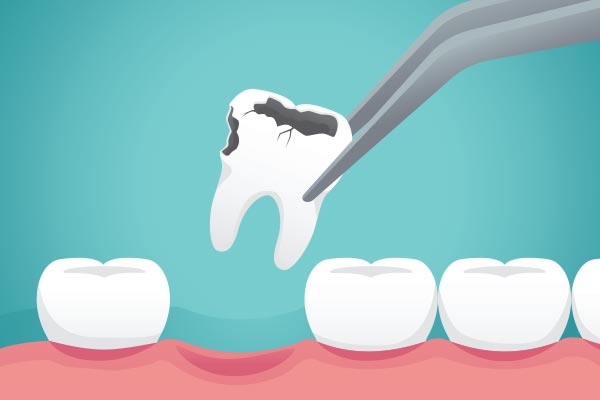Tooth extraction frequently occurs in the office of a for a variety of reasons, including:
- Bacterial decay
- Accidental breakage
- Overcrowding
- Impaction
Most patients are more concerned about the gap the tooth leaves behind than its fate outside their mouths. An extracted tooth usually takes one of the following paths, depending on whether the dentist or the patient claims it.
Reasons a dentist keeps the tooth
Incineration
A dentist usually places an extracted tooth into a sealed bio-medical bag because it retains the patient's oral tissue and blood, which are potentially infectious materials. Bio-medical waste services remove the bags from dental offices and bring them to facilities to incinerate their contents.
Recycling
If a general dentist pulls a tooth with a filling containing metal, it is necessary to send it to a recycling facility before incineration. Burning a tooth before removing the filling poses a risk of contaminating the air with mercury found in the metal. The metal can be repurposed after it is removed.
Training
Sometimes, dentists send extracted teeth to universities and other institutions where dental students and colleagues receive training. Extracted teeth can help students studying dental diseases and procedures because they present real case studies and practice models.
Research
A general dentist may want to attend seminars and take workshops to learn about new and updated techniques for patient services. By sending extracted teeth to dental laboratories and research facilities, a dentist can help ensure an adequate supply of models to test the efficacy of new procedures before they are recommended and taught.
Reasons a patient keeps the tooth
Patients may want to keep extracted teeth for various reasons. Before releasing a tooth to a patient, a dentist must thoroughly clean it to remove traces of bacteria and tissue.
Sale
Some individuals who have extracted teeth with metal fillings or gold crowns may wish to deliver them to scrap metal collectors who reuse the material. These services will reimburse individuals according to the amount of retrievable metal. Teeth containing gold crowns are particularly desirable.
Sentiment
There are many reasons why patients have sentimental attachments to extracted teeth. Although this mostly occurs with baby teeth, adults may occasionally attach a particular meaning to a tooth, making it a desirable memento.
Bragging rights
Some patients are intrigued by the removal of teeth from their mouths and want to show them to others. Impacted wisdom teeth are usually large, creating a sense of astonishment that some people feel compelled to share.
Projects
A few patients get creative with extracted teeth, using them as display objects, jewelry, or incorporating them into art projects. Although this is not an appealing route for most persons, it does happen. A general dentist must take great care to sanitize the tooth and instruct the patient about its proper handling before releasing it.
Conclusion
Tooth extraction is a standard service provided by a general dentist; however, it is considered a last resort for damaged teeth beyond repair or teeth that pose other oral health risks. Patients who want to keep extracted teeth should notify their dentist before treatment.
or call Ohio Cosmetic Dentists at 614-503-5240 for an appointment in our Columbus office.
Recent Posts
Regular visits to a general dentist are essential for maintaining optimal oral health. A general dentist is responsible for routine check-ups and cleanings and provides a wide range of services to prevent, diagnose, and treat various dental issues. From preventive care to restorative procedures, a general dentist plays a crucial role in ensuring your teeth,…
A general dentist shared some ways to help prevent bad breath. This is a topic no one wants to discuss. Bad breath happens to everyone at one point or another. If you take proper precautions, you can avoid having bad breath. We should openly talk about this taboo topic. The more we talk about it, the…
You can have restorative dental procedures from your general dentist to replace defective or damaged parts of your teeth. Restorative procedures are used to replace broken or missing teeth and are among the most common treatments and procedures that dentists handle regularly. They restore the function and aesthetics of teeth and supporting structures while helping…


